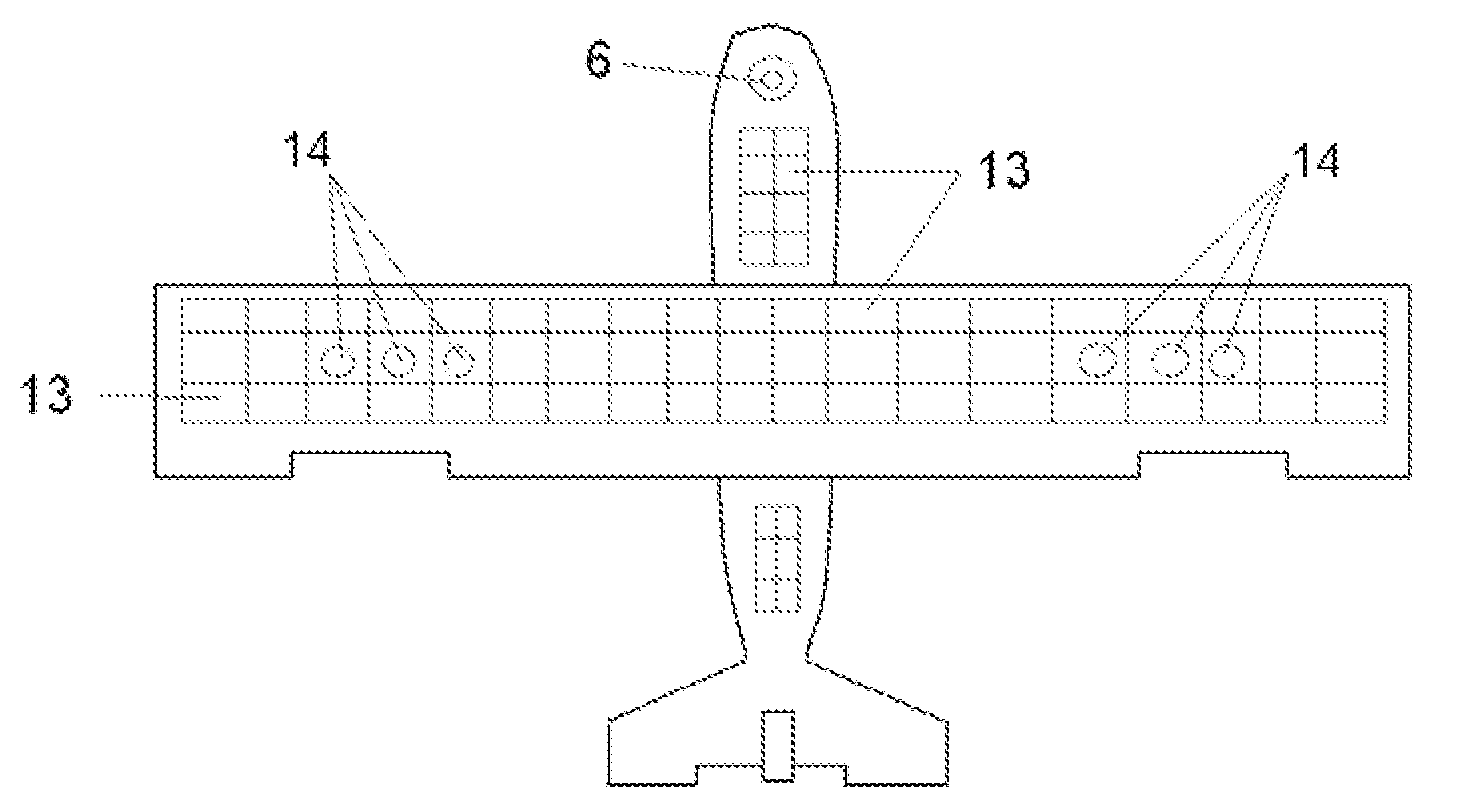Flying Apparatus
a technology of flying apparatus and rotor, which is applied in the field of flying apparatus, can solve problems such as the need for components to be reset, and achieve the effects of improving product consistency, reducing material waste, and increasing manufacturing volum
- Summary
- Abstract
- Description
- Claims
- Application Information
AI Technical Summary
Benefits of technology
Problems solved by technology
Method used
Image
Examples
Embodiment Construction
[0027] One embodiment of the present invention is a glider in the shape of a bird consisting of an upper body half and a lower body half which are sealed together by methods such as heat-sealing, ultrasonic welding, or adhesives. Film thickness can vary for the upper and lower body halves in the range of about 2-10 mils depending on design requirements. The internal skeleton, ballast and stiffener are bonded into an inner sub-assembly and welded to either the upper body half, lower body half, or both. Designs without an internal skeleton can be incorporated using only the ballast and stiffener, which can be of various lengths along the wings.
[0028] In embodiments utilizing an internal skeleton, the glider will consist of an upper body half and a lower body half with the internal skeleton placed between the two halves. The upper and lower body half have wing sections and a fuselage section. The internal skeleton is generally T-shaped, rigid or semi-rigid, and provides a degree of ri...
PUM
 Login to View More
Login to View More Abstract
Description
Claims
Application Information
 Login to View More
Login to View More - R&D
- Intellectual Property
- Life Sciences
- Materials
- Tech Scout
- Unparalleled Data Quality
- Higher Quality Content
- 60% Fewer Hallucinations
Browse by: Latest US Patents, China's latest patents, Technical Efficacy Thesaurus, Application Domain, Technology Topic, Popular Technical Reports.
© 2025 PatSnap. All rights reserved.Legal|Privacy policy|Modern Slavery Act Transparency Statement|Sitemap|About US| Contact US: help@patsnap.com



